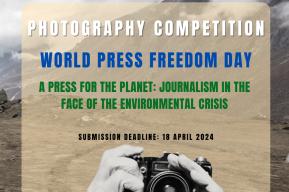News
Nepal’s heritage sites on shaky ground after devastating quake

Eighty per cent of the temples and historic structures in both Bhaktapur and Kathmandu Durbar Squares have been destroyed. The walls on two wings of the former Royal Palace in Kathmandu, which is now a museum, have totally disintegrated from the corners.
5 June 2015 – Against the backdrop of Nepal’s humming capital of Kathmandu, in a centre just off Durbar Square, it would be difficult to miss the elderly woman smiling warmly in a bright red sari. She is among those offering traditional, homespun goods, the cultural heritage of the country that is part of the allure that, for centuries, has compelled travellers to visit in droves.
On 25 April, the Square’s customary hustle and bustle – along with the rest of the country and some neighbouring States – was jolted by a violent earthquake that shattered lives and reduced structures that have stood for decades, some even centuries, to rubble. The disaster, which has left more than 8,000 people dead and thousands of others injured, led the Nepalese Government to declare a state of emergency.
Not three weeks later, amid ongoing rescue and relief efforts, another powerful temblor shook the country, ravaging more lives and dealing another brutal blow to the crippled infrastructure. Adding to the human tragedy was an immense cultural loss that has registered both locally and globally.
According to a preliminary assessment by the United Nations Educational, Scientific and Cultural Organization (UNESCO), the earthquake has severely impaired Nepal’s cultural heritage, particularly in the Kathmandu Valley – a World Heritage Site known for its unique temples, stupas and historic houses – where more than half have either collapsed or been seriously damaged.
In a message expressing her deep condolences on the magnitude of human loss, UNESCO Director-General Irina Bokova also voiced shock at the earthquake’s “devastating impact on the unique cultural heritage in the country, in particular extensive and irreversible damage at the World Heritage site of Kathmandu Valley.”
Kathmandu Valley is composed of seven groups of monuments and buildings representing a broad range of historical and artistic achievements. The Valley is world famous for the three Durbar Squares of Kathmandu, Bhaktapur and Patan, as well as the Buddhist stupas of Swayambhu and Bauddhanath, along with the Hindu temples of Pashupati and Changu Narayan.
The capital city of Kathmandu – the political, commercial and cultural hub of the country – stood for centuries as a colourful showcase of a culture rich in art and tradition. Encircled by a range of green terraced hills dotted with clusters of red tiled-roofed houses, one legend says that the valley was once covered by a lake until the Bodhisattva Manjushri raised his sword of wisdom and sliced a passage through the mountain walls, draining the water and creating the first settlements.
Today that passage has been shaken to its core. Christian Manhart, the director of UNESCO’s Kathmandu office, described the extent of the damage to the country’s cultural heritage, particularly in the Kathmandu Valley, as “absolutely dramatic.”
“Half of the temples in Patan Durbar Square have collapsed. Eighty per cent of the temples and historic structures in both Bhaktapur and Kathmandu Durbar Squares have been destroyed. The walls on two wings of the former Royal Palace in Kathmandu, which is now a museum, have totally disintegrated from the corners and we have, as yet, not saved the objects inside,” he said.
Mr. Manhart explained that two teams of structural engineers deemed it was unsafe to enter the Palace Museum and that it must be demolished. “We have plans to remove the roof and use a crane to take the objects from top to bottom out of these wings and then to demolish the building.”
As per the Government’s request, UNESCO has begun evaluating and consolidating monuments. “We have assessed the monuments inside the Kathmandu Valley and I have sent out a team to more remote areas where standing temples are at risk of collapsing when the monsoon comes,” Mr. Manhart said.
Regarding the stupa of Swayambhunath, on a hill in Kathmandu, the devastation was palpable, the UNESCO official noted, adding that while “the earthquake did not trigger an anticipated landslide, important cracks on the level of the steep slope in the south of the precipice may widen during the rainy season – in three to four weeks – sparking a landslide that would be very damaging.”
He pointed out that hotels are not safe and most of them are closed at the moment, bringing to light another harsh impact of the earthquake on the fragile country – plummeting tourism, a main source of income for Nepal.
“Many hotels in the Himalayas’ Sagarmatha National Park in the Mt. Everest area are destroyed, especially by the second earthquake, whose epicentre was under Mt. Everest. The base camp has been destroyed – keeping away any potential trekking tourists.”
Those who come for the heritage monuments will also think twice, now that a big part of them has been reduced to dust. “This will have a medium and maybe even a long-term impact on tourism,” Mr. Manhart noted.
Nepal is not unfamiliar with the devastation wrought by earthquakes or the subsequent reconstruction. In 1934, an earthquake destroyed 20 per cent of the buildings in the Kathmandu Valley and one-quarter of those in the capital. Back then, stone and wooden features were salvaged and used later for restoration.
Mr. Manhart is optimistic. “Today, in addition to plans, drawings, photographs and measurements, we have very detailed documentation of not only the World Heritage Sites but most of the historic houses.”
As centuries of existence crumbled overnight, the strength of an ancient people remains determined to rise from the ashes, to bequeath to future generations a way of life handed down through the ages.


